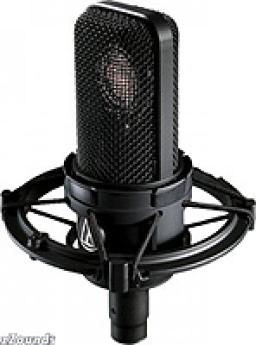

@rg
Early Recording Techniques

When tape recording was first becoming prominent, all recordings were done live. All the sources converged onto one track of a magnetic tape. Because there was only one track, there was no way to adjust the individual levels of the recorded instruments after the initial recording. If you didn't get the balance right the first time, you had to record the entire track again. Overdubbing, the process of adding live tracks after the initial recording, was impossible because of the mechanics of early tape recorders. As time went on, tape recorders split the width of the tape up into smaller tracks, allowing for multiple tracks. In time, recording and playing back four or eight tracks became possible.
Les Paul's Innovations
Before jazz guitarist Les Paul came on the scene, overdubbing was virtually impossible. To understand the difficulty in overdubbing at that time, you first need to understand how the analog tape machine works. In an analog tape machine, three electric heads — the record head, playback head, and erase head — handle the recording process. The record head magnetizes the tape that flows beneath it; the playback head picks up the information from the tape and sends it out to the speakers; and the erase head erases the tape when necessary. The three heads are set up one after another, so that as the record head writes, the playback head picks up tape farther along in the recording. Because each head is reading a different part of the tape, they aren't synchronized. For overdubbing to work (such as layering guitar sounds one on top of another), the artist would need to listen to the previously recorded track to know when to start, when to pick up the tempo, etc…. Unfortunately, since the playback head is in a different spot than the record head, the recorded signal is out of sync; it plays back later than the artist played it.
Les Paul was a very innovative man. Not only did he invent the solid body electric guitar as we know it today, he also made overdubbing and multitrack recording possible. Paul had the idea to combine the record head and the playback head into one unit, allowing artists to overdub in real time with no delay.
Les Paul's records were revolutionary; no one had ever heard such a thick, lush sound. Based on Paul's discovery, the company Ampex released a 4-track recorder with Sel-Sync (Selective Synchronization) in 1955. However, while this innovation made overdubs possible, most bands still recorded live and used overdubs to add solos, harmony parts, or additional vocals.
How Multitrack Changed the World
Multitrack recording was the single most important innovation in audio recording. The ability to record instruments on individual tracks, have control of separate volume levels, and add other parts after the original recording, changed the recording process forever. No longer did you have to settle for a live take. If the singer was off, you could go back and re-record individual parts. Guitar players could layer acoustic guitar backgrounds with electric guitar rhythm parts. The possibilities were endless.
The number of tracks available increased over time. At first, the 4-track was common. The Beatles, for example, recorded “Strawberry Fields Forever” on two separate 4-track tape machines, for a total of eight tracks. Modern recordings can be twenty-four, forty-eight, or, in the case of computers, several hundred tracks. For you, the home-based musician, this process allows you to slowly build up arrangements one track at a time. You can start with a bass line, add a guitar part later, track some vocals later — all by your lonesome. The finished product will sound like one large, live band even though you played it all yourself.
But home studio owners aren't the only ones who work this way; Trent Reznor of Nine Inch Nails always multitracks. He records alone in his home studio, multitracking to build songs. Tom Scholz of the group Boston records the same way, playing each instrument one at a time.
